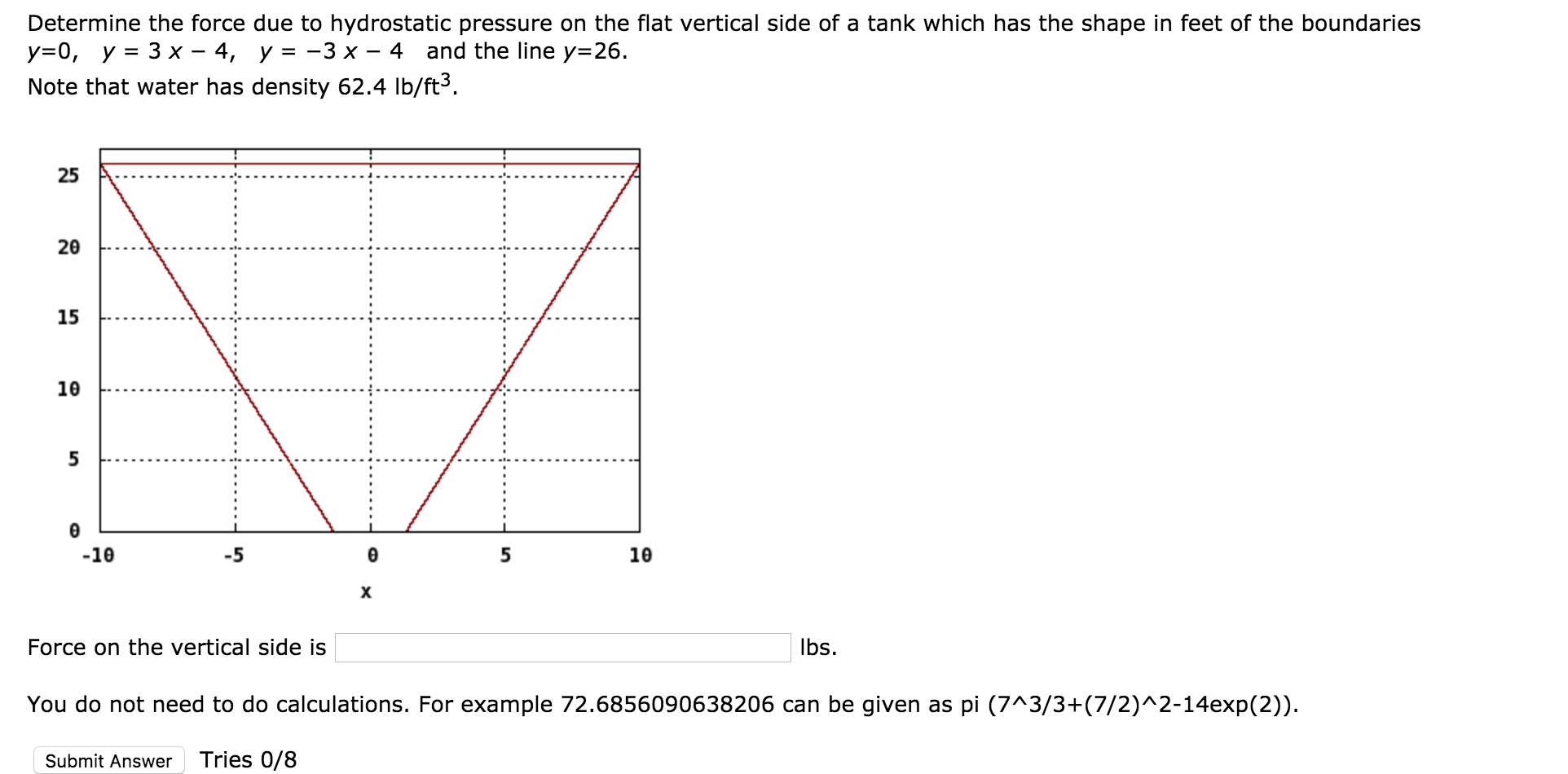
The hinge C, determine the resultant and the location of this force of the gate Assuming the material of the gate to be homogeneous and neglecting friction at 퐹푅= 퐹 1 + 퐹 2 + 퐹 3 = 160 + 444 + 243 = 847 푘푁Įxample 4: the rectangular gate CD shown in the below figure is 1 wide and 2m Now, the resultant force can be evaluated by: Measurements indicate that the resultant force of the water on the gate is 500 kN.ġ- Determine the pressure at the bottom of the gate.ĥ00 ∗ 1000= 1000∗ 9. 66 푚Įxample 2: A square 3m*3m gate is located in 45 ° sloping side of a dam. The second moment of area can be calculated from the table for the rectangular: 퐼푥,푐= 푏푑 3 12 → 퐼푥,푐= 7 ∗ 2 3 12 = 9. The location of the resultant force of the water on the vertical end of the pool where

Taking pressure as zero at the surface and measuringĭown from the surface, the pressure on an element 훾퐴, submerged distance z, isĪnd therefore, the force on the element isĮmail: Dimensions Area 퐼푥,푐, 2nd moment ofĮxample 1: A swimming pool is 18m long and 7m wide. This plane surface is totally submerged in a liquid of density 휌 and inclined at anĪngle of 휗 to the horizontal. Thus the resultant force will be given by Pressure over its surface), the pressure, p, will be equal at all points of the surface. Surface but, in general, each force is of different magnitude as the pressure usuallyįor a horizontal plane submerged in a liquid (or a plane experiencing uniform The force on each elemental area is always normal to the Pressure can be subtracted for simplicity when it acts on both sides of the structure.Ĭonsider the plane surface shown in the figure below. Note: When analyzing hydrostatic forces on submerged surfaces the atmospheric


Email: Forces on Submerged Plane Surfaces


 0 kommentar(er)
0 kommentar(er)
